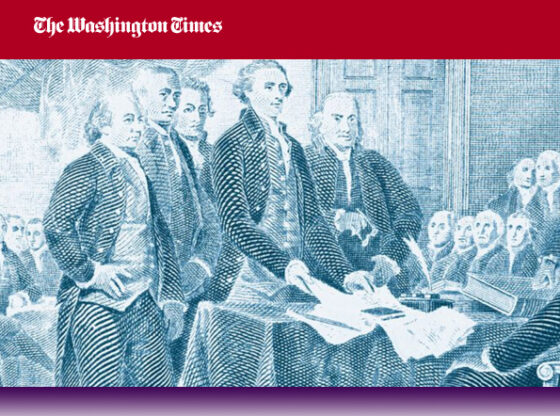“The left’s war on police, faith, history and American values is tearing our country apart, which is what they want,” President Trump told reporters on Aug. 31, 2020, after criticizing two Democratic National Convention caucus meetings for omitting “under God” from the Pledge of Allegiance. “We’re not taking the word God out of anything.”
The very next day, a committee reporting to Washington, D.C., Mayor Muriel Bowser recommended removing, relocating or contextualizing monuments to historical figures that participated in “slavery, systemic racism, mistreatment of, or actions that suppressed equality for, persons of color, women and LGBTQ communities and violation of the DC Human Rights Act.” They identified four dozen D.C. sites, including the Washington Monument, Jefferson Memorial and Benjamin Franklin Statue.
Understanding history is not about applying modern standards or modern law retroactively to historical figures. Doing so is cultural Marxism, especially because many on this committee’s list contributed to America’s founding principles of freedom of religion, speech, press and assembly that apply today to all Americans. The fact that this committee has the freedom to express their views stems from the accomplishments of the very historical figures they seek to remove.
To develop a healthier perspective of our past, we must first understand how past Americans viewed their lives, what circumstances they faced and how they changed. Instead of trying to impose our diversity on the past, we should ask questions such as: How did our nation’s Founders define diversity? What injustices did they face? Here’s a hint. They didn’t view themselves as united “under God.”
“The revolution was in the minds and hearts of the people, a change in their religious sentiments, of their duties and obligations,” founder John Adams, America’s second, president reflected. “This radical change in the principles, opinions, sentiments and affection of the people, was the real American Revolution.”
In earlier centuries, both Protestants and Catholics were persecuted and killed in England, depending on the monarch’s preference. Jews were persecuted throughout Europe. Many came to America for religious freedom as a result. Puritans came to Massachusetts while Catholics established Maryland. More than half of the 13 colonies were formed under the Anglican Church. Quakers in Pennsylvania welcomed all, which made Philadelphia a rare safe haven for Jews.
“The colonies had grown up under constitutions of government, so different, there was so great a variety of religions, they were composed of so many different nations, their customs, manners and habits had so little resemblance,” Adams wrote of European Americans’ diversity.
“Their knowledge of each other so imperfect, that to unite them in the same principles in theory and the same system of action was certainly a very difficult enterprise.”
Read the full article as originally published in the Washington Times.


